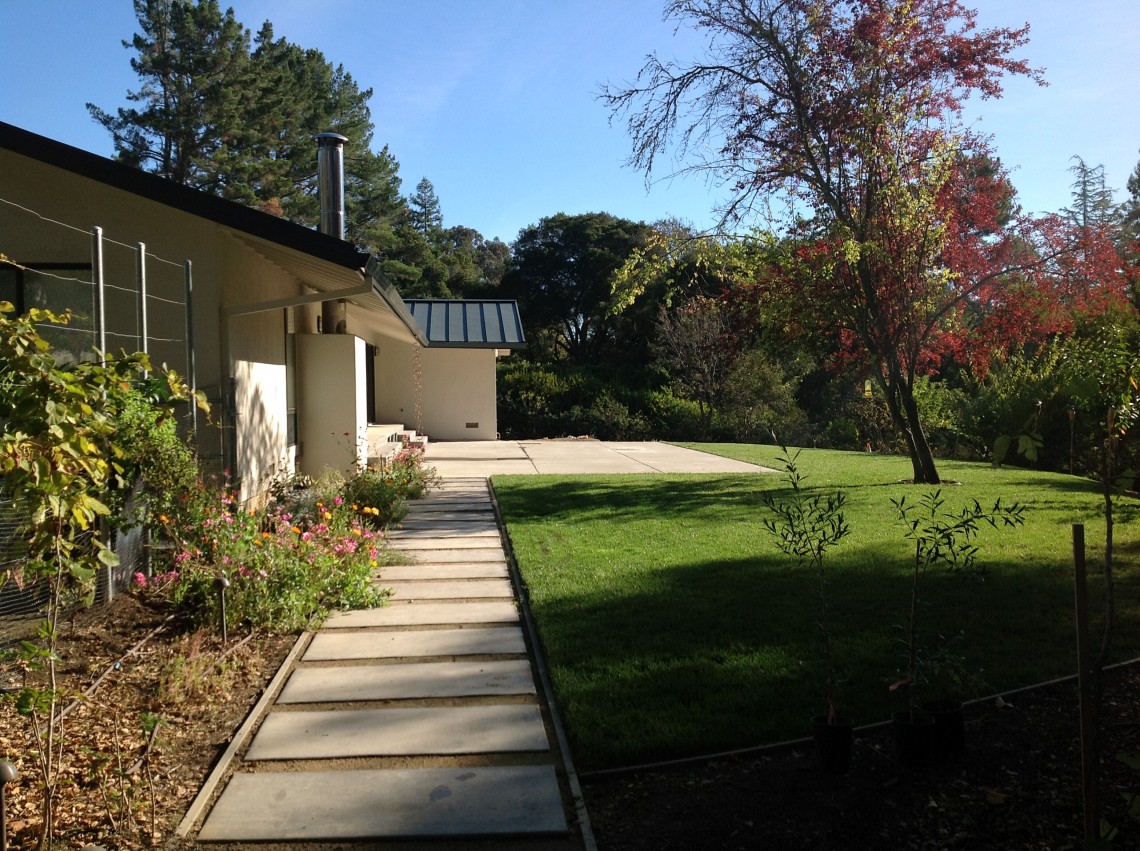
Stanford students join weekend architectural challenge
Local patron Sonia Dhillon-Marty invites teams made up of Stanford students and professional architects to her property, Champ de Portola, for a two-day design charrette and competition.
Nine student/architect teams assembled at a private residence in Portola Valley, Calif., on Friday, Oct. 26, for dinner to launch a weekend of intense design and serious competition. The assignment is to design an artist’s cottage to be built on Sonia Dhillon-Marty’s property, Champ de Portola, by 2014.
Nine architects from four countries paired with Stanford University undergraduate students in the Architectural Design Program for the two-day charrette, a creative working session convened to solve design problems. Teams were given site plans, a project description and a philosophical statement, but little else.
This experimental learning project proposed by Dhillon-Marty and the Dhillon Marty Foundation is a collaboration with the Stanford Architectural Design Program and the Stanford Arts Institute. The objective is to arrive at a design, or set of designs, that pushes the ideas of architecture and construction – and ultimately leads to a finished product.
“I want art and architecture students to know that they can make large contributions to humanity through their work by creating beautiful places that enrich people’s lives,” said Dhillon-Marty.
Participating architects from the United States are Kevin Daly of Daly Genik, Erin Moore of the University of Oregon, Larry Booth of Booth Hansen, Antonio Caliz of Valerio Dewalt Train Associates and Charles Debbas of Debbas Architecture. Architects from abroad are Takato Tamagami of Takato Tamagami Architectural Design and Nihon University in Japan; Ko Nakamura of Mosaic Design and Kengo Kuma Lab at Tokyo University in Japan; Yao Chen, a doctoral candidate at the Kengo Kuma Lab from China; and Aris Kafantaris, a graduate student at the Kengo Kuma Lab from Greece.
Nakamura and Tamagami delivered free public lectures at Stanford’s Clark Center before the charrette – Nakamura on Wednesday, Oct. 24, at 7:30 p.m. and Tamagami on Thursday, Oct. 25, at 7:30 p.m.
The jurors evaluating the final design proposals on Sunday afternoon include Dhillon-Marty, Stanford Architectural Design Program Director John Barton, Microsoft Director of Corporate Citizenship Sid Espinosa, Stanford biology Professor Susan K. McConnell and Thomas Blom Hansen, a Stanford professor in anthropology and the director of the Center for South Asia.
“This charrette represents an unprecedented opportunity for our students to work in close proximity with leading architects from around the world. These opportunities are rare and precious and will be remembered by the students their entire careers,” said Barton. “Many thanks are due to Sonia for her interest in our students, architecture and architectural education.”
Dhillon-Marty’s philosophy behind the cottage project is that architecture is not about walls, but about opening up to one’s surroundings, such as nature and humanity. “Architecture needs to be fluid and respond to human needs, seasonal change, taste and technological advances,” she said.
The Dhillon Marty Foundation’s mission is to promote peace and social justice through art, architecture and culture, starting with the greater Punjab region of eastern Pakistan and northwestern India and extending to all regions where there is turmoil due to natural, economic or social causes. Current projects are in Tohoku, Japan, and greater Punjab in India and Pakistan.
Stanford Architectural Design Program
The Architectural Design Program seeks to integrate engineering and architecture in ways that blend innovative architectural design with cutting-edge engineering technologies. Combining hands-on architectural design studios with a wide variety of courses, students can choose from a mix of elective courses concerning energy conservation, sustainability, building systems and structures, as well as design foundation and fine arts courses.
In addition to preparing students for advanced studies in architecture and construction management, the program’s strong math and science requirements prepare students well for graduate work in other fields, such as civil and environmental engineering, law and business. The major provides a background for individuals wanting to explore a diversity of careers in architecture, engineering, construction and structures.
